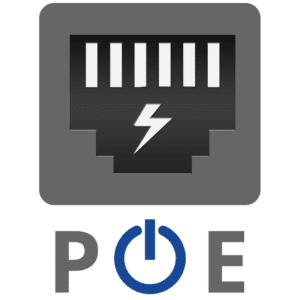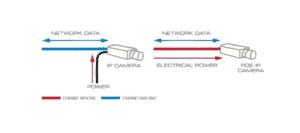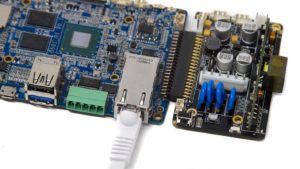What is Power Over Ethernet, and Who Can Benefit From It?
Put simply, Power Over Ethernet is exactly what it sounds like – powering ethernet connected devices via ethernet cables, and through ethernet ports. Properly configured devices can be powered this way, provided that they’re connected to a properly configured ethernet network, which is also surprisingly simple to set up. This eliminates the need for complex and expensive multi-wire power supply setups, saving engineering and installation technician time, and simplifying device complexity. But it’s not quite as simple as plugging in any Ethernet cable into any device – and some implementations of Power Over Ethernet may benefit more than others. So what is it, and how is it best used?
How Power Over Ethernet Works

Like any other cable with two or more wires, Cat 5 or other ethernet cabling is able to conduct not just data, commonly conducted as a signal vs ground, but also complete positive/negative electrical power. Because twisted pair and gigabit ethernet uses differential signaling, that is, the difference between the current in a pair or group of conducting wires, it doesn’t interfere with the transmission of data to include power over the ethernet signal line.
What Type of Equipment does Power Over Ethernet Require?

Modern switches and midspans are able to detect whether devices are PoE enabled, and provide power only when needed, preventing damage to non PoE devices and saving energy to unused or non-active ports. For powered ports, up to 71W of power at up to 57V are available, depending on the type of cabling and implementation, providing plenty of power for most computers and even some low-draw mechanical devices.
Powering Touchpanel PCs over Ethernet – What’s the Benefit?

Often times, these touchpanel PCs are installed as part of updates in buildings and equipment, or in new appliances that have restrictive sizes or designs. In these cases, going back through and adding separate power cabling, with its specialized safety regulations, may be very expensive or impossible. Adding an entire new circuit to a new appliance design could push the price above what the market will bare. Or there may be a dozen other reasons why adding a separate power supply isn’t suitable where touch panel PCs are being integrated. In these cases, Power Over Ethernet offers a simple, fast, space-saving, power-saving solution.
Estone Technology offers a variety of touchpanel PCs with Power Over Ethernet functionality. If you think POE makes sense for your product or implementation, contact us to learn more.
